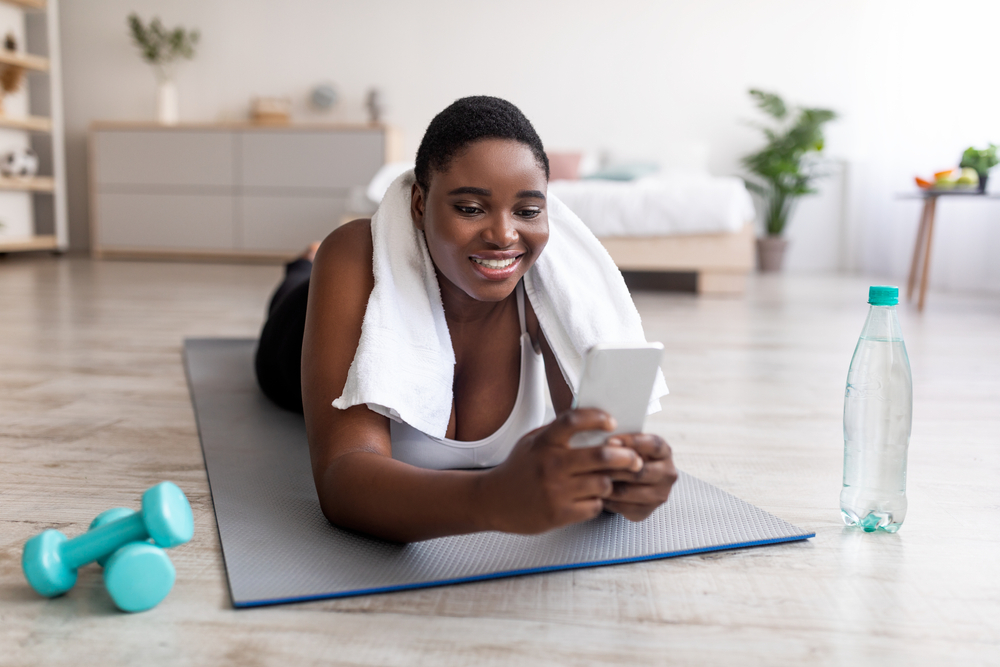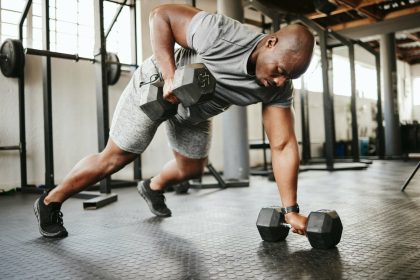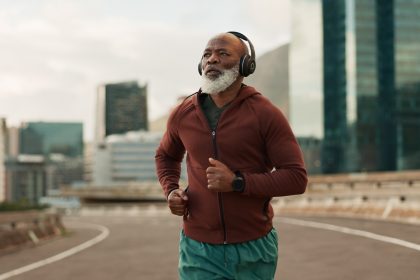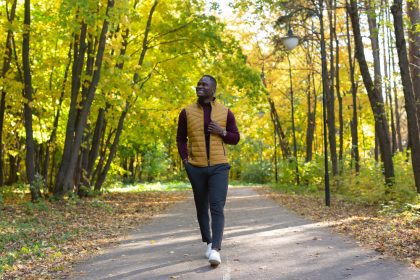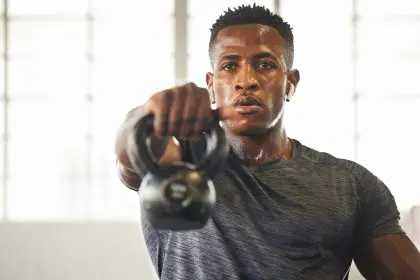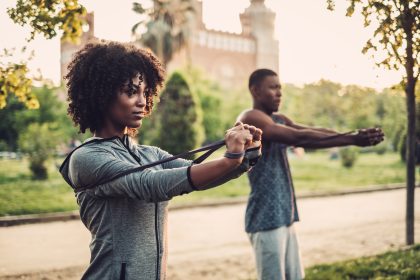Getting in shape can feel daunting, especially if you’re overweight. However, starting with small, manageable steps can make the journey to better health more achievable and less intimidating. Here are five simple exercises to help you start your fitness journey.
1. Walking: The first step to fitness
Walking is one of the easiest and most accessible exercises for anyone looking to get in shape. It doesn’t require special equipment, and you can do it almost anywhere. Here’s how to get started:
Benefits of walking
- Low impact: gentle on your joints, making it ideal for beginners.
- Burns calories: helps with weight loss and cardiovascular health.
- Improves mood: boosts mental health by releasing endorphins.
How to begin
- Start slow: begin with short distances, such as a 10-minute walk around your neighborhood.
- Gradually increase: slowly increase the duration and pace of your walks.
- Consistency is key: aim for at least 30 minutes of walking most days of the week.
Walking is a fantastic way to introduce regular physical activity into your routine without overwhelming yourself.
2. Chair exercises: Easy moves for strength and flexibility
Chair exercises are perfect for those with limited mobility or looking for low-impact options to start building strength and flexibility.
Benefits of chair exercises
- Adaptable: suitable for different fitness levels and physical conditions.
- Convenient: can be done at home, in the office, or anywhere with a chair.
- Improves flexibility: enhances joint mobility and muscle flexibility.
Sample exercises
- Seated march: sit up straight and lift one knee towards your chest, then the other. This mimics a marching motion.
- Chair squats: stand up from a seated position without using your hands, then sit back down. This helps strengthen your legs and core.
- Arm circles: extend your arms to the sides and make small circles, gradually increasing the size.
Incorporating these simple chair exercises into your daily routine can help improve your overall strength and flexibility without straining your body.
3. Water aerobics: Fun and effective cardio
Water aerobics is an excellent option for overweight individuals because the buoyancy of the water reduces the impact on your joints while providing resistance for a great workout.
Benefits of water aerobics
- Low impact: reduces stress on joints and muscles.
- Full-body workout: engages multiple muscle groups simultaneously.
- Calorie burner: can help with weight loss and cardiovascular health.
How to get started
- Join a class: many community pools and gyms offer water aerobics classes for beginners.
- Basic moves: start with simple movements like walking or jogging in the water, leg lifts, and arm circles.
- Gradual progression: increase the intensity and duration of your workouts as you become more comfortable.
Water aerobics is an effective and fun way to get in shape while enjoying the buoyancy and resistance that water provides.
4. Stretching: Enhancing mobility and reducing pain
Stretching is often overlooked, but it’s crucial for maintaining flexibility, reducing pain, and preventing injuries, especially when starting a new exercise routine.
Benefits of stretching
- Increases flexibility: helps maintain and improve the range of motion in your joints.
- Reduces muscle tension: eases muscle stiffness and soreness.
- Improves posture: enhances overall body alignment and posture.
Stretching routine
- Neck stretch: gently tilt your head towards each shoulder, holding for 15-30 seconds on each side.
- Hamstring stretch: sit on the floor with one leg extended and reach towards your toes, holding the position for 15-30 seconds.
- Cat-cow stretch: on all fours, alternate between arching your back (cat) and dipping it (cow) to stretch your spine.
Incorporating a regular stretching routine can help alleviate discomfort and improve your overall flexibility and mobility.
5. Light resistance training: Building strength safely
Resistance training, using light weights or resistance bands, is crucial for building muscle strength and endurance. It can be adapted to any fitness level and is particularly beneficial for those who are overweight.
Benefits of resistance training
- Strengthens muscles: improves muscle tone and strength.
- Boosts metabolism: increases your resting metabolic rate, helping you burn more calories.
- Improves bone health: enhances bone density and reduces the risk of osteoporosis.
Beginner exercises
- Bicep curls: using light dumbbells or resistance bands, curl your arms towards your shoulders and slowly lower them.
- Leg lifts: while lying on your back, lift one leg at a time, keeping it straight, to strengthen your lower body.
- Seated rows: use a resistance band around your feet and pull towards your torso to work your back muscles.
Light resistance exercises can help you build strength safely and effectively, preparing your body for more intense workouts in the future.
Conclusion: Embracing small steps for long-term success
Starting an exercise routine when you’re overweight can be challenging, but taking small, manageable steps can significantly improve your health and fitness over time. By incorporating walking, chair exercises, water aerobics, stretching, and light resistance training into your routine, you can build a strong foundation for a healthier lifestyle. Remember, consistency is key, and listening to your body and progressing at your own pace is important. Embrace these small steps, and you’ll be on your way to a fitter, healthier you.
This story was created using AI technology.

